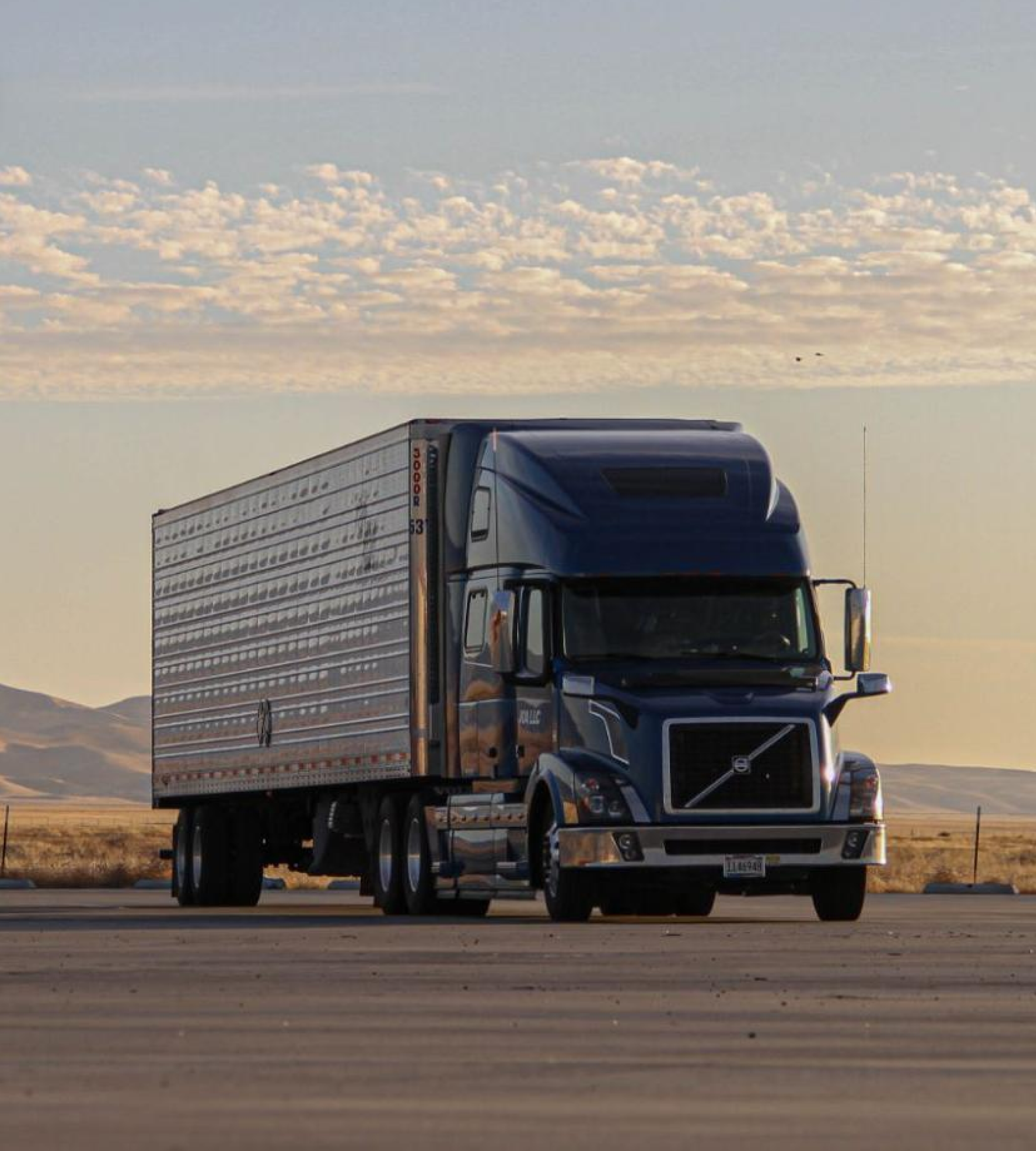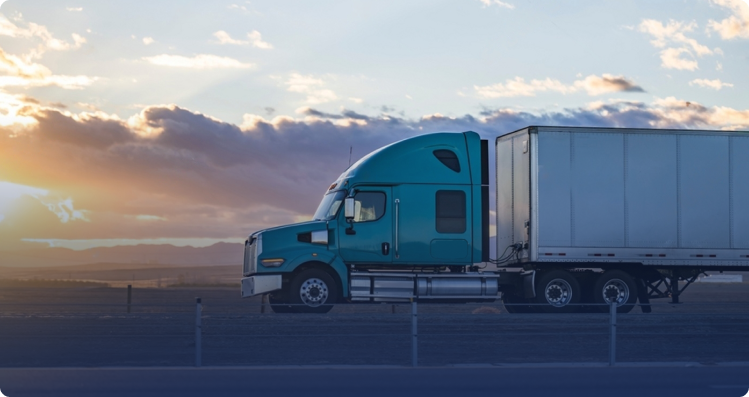
Understanding Dry Van Shipping

What is Dry Van Shipping?
Dry van freight shipping is an extremely versatile, low-cost freight transportation method that uses enclosed containers to move a wide range of non-perishable goods.
Specifically, dry van freight shipping protects cargo from bad weather, snow, and other external elements. A dry van trailer can carry up to 46,000 lbs, meaning you can easily ship large quantities safely across extended delivery distances.

Advantages of Dry Van Shipping
Dry van freight shipping caters to industries that regularly move dry goods such as retail and construction.
The weight of these trucks makes them perfect for moving heavy equipment, large quantities of retail goods, as well as large orders of beverages and brewing equipment.
This flexibility, combined with a more affordable price tag than other transportation methods, makes dry vans the cost-effective choice for a myriad of shipping needs.

Key Considerations for Craft Beverage Shipping
These vehicles aren’t temperature-controlled, meaning dry van freight shipping is better suited for non-perishable goods such as malted barley, hops, adjuncts, clarifying agents and other ingredients used in the craft beverage or beer-making process.
That said, dry van shipping is a cost-effective option compared to alternative methods during certain seasons. While you may want to consider cold chain shipping if temperature control is needed to keep your products fresh in the summertime, colder outdoor temperatures act as a natural cooling system in winter.
Aside from considerations regarding temperature regulation, selecting the appropriate dry van size relative to its capacity and limitations is also key. We’ll discuss this more in-depth as we work through this dry van shipping guide.
 Learn More About Temperature Controlled Shipping
Learn More About Temperature Controlled Shipping 

Dry Van Trailer Dimensions & Specifications
Knowing your dry van trailer dimensions is crucial to ensure you choose one that is best suited to the load you’re moving. Let’s explore the types in more detail:
53' Dry Van Dimensions (Swing Door)

- 45,000 lbs weight capacity
- 636” outside length
- 101” outside width
- 162” outside height
- 630” inside length
- 99” inside width
- 110” inside height
- 111” door opening height
- 99” door opening width
- 3,975 cubic feet
- Load up to 26 pallets
48' Dry Van Dimensions (Roll-up Door)
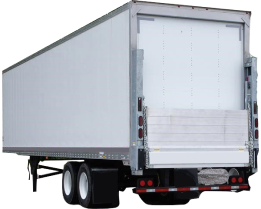
- 45,000 lbs weight capacity
- 576” outside length
- 102” outside width
- 162” outside height
- 567” inside length
- 99” inside width
- 112.5” inside height rear
- 110.5” inside height center
- 108.5” inside height front
- 105” door opening height
- 93” door opening width
- 3,566 cubic feet
- Load up to 24 pallets
48' Dry Van Dimensions (Swing Door)
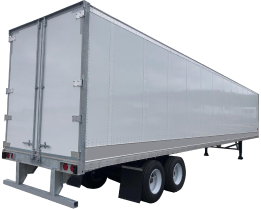
- 45,000 lbs weight capacity
- 576” outside length
- 102” outside width
- 162” outside height
- 567” inside length
- 99” inside width
- 110” inside height
- 110” door opening height
- 99” door opening width
- 3,566 cubic feet
- Load up to 24 pallets
26' Box Truck Dimensions

- 10,000 lbs weight capacity
- 318” outside length
- 102” outside width
- 102” outside height
- 300” inside length
- 96” inside width
- 96” inside height
- 96” door opening height
- 96” door opening width
- 1,800 cubic feet
- Load up to 13 pallets
24' Box Truck Dimensions

- 10,000 lbs weight capacity
- 288” outside length
- 102” outside width
- 102” outside height
- 288” inside length
- 91” inside width
- 89” inside height
- 88” door opening height
- 87” door opening width
- 1,350 cubic feet
- Load up to 12 pallets

Ready to Streamline Your Shipping Process?
Choose Brew Movers and take the first step towards the fast and reliable delivery of your craft beverages.
get a quoteAn Overview
of Pallet Shipping
Regardless of which dry van configurations you prefer, pallet shipping is recommended to maximize security and efficiency. This section of our dry van shipping guide provides an overview of shipping pallet sizes and other relevant details.
Shipping Pallet Dimensions & Types
There are several types of shipping pallets, but three common ones include:

Block Pallets
These are known for their stability and durability because they have both top and bottom deck boards along with blocks or stringers between them. As such, they are more expensive and usually saved for heavier loads.
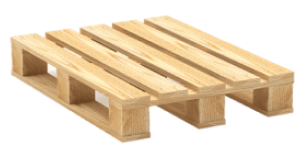
Stringer Pallets
These have top and bottom deck boards as well, but instead of blocks, they have two or three parallel pieces of lumber known as stringers running the length of the pallet. They are less expensive and used for lighter loads.
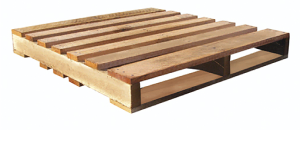
Double-Face Pallets
These have top and bottom deck boards that are identical, allowing the pallet to be used from either side. They offer flexibility as they can be loaded and unloaded from either side.
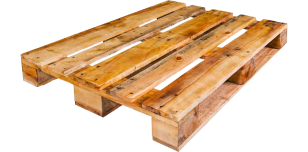
Dry Van Trailer Pallet Configurations
Dry van configurations affect not only the quantity of goods that can be transported but also their safety and stability during transit. For craft beverages—which may include glass bottles or delicate packaging—the right configuration is essential to prevent damage.
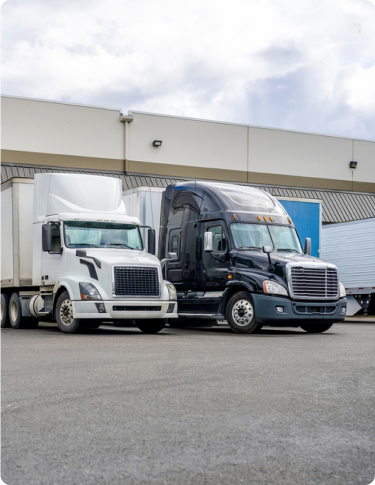
Straight Pallet Loading
This is one of the most traditional dry van configurations, as shipping pallets are loaded in a straight line that runs parallel to the length of the trailer.
Advantages:
- Maximizes the utilization of space for large shipments.
- Simplifies the loading and unloading process to save time.
- Provides easy access to all pallets for logistical efficiency.
Disadvantages:
- Less stability for loads that aren’t uniformly shaped or weighted.
- Less efficient for mixed cargo that requires different handling.
Turned Pallet Loading
This is another one of the most popular dry van configurations, in which shipping pallets are loaded at a 90-degree angle to the direction of the trailer.
Advantages:
- Enhances stability, especially for uneven or irregularly shaped loads.
- Offers better weight distribution across the trailer floor to reduce the risk of accidents.
- Allows for more secure transport of fragile items like craft beverages.
Disadvantages:
- Might reduce the total number of pallets that can be loaded.
- Can complicate loading and unloading, thus requiring more time and careful handling.
Pinwheel Pallet Loading
Pinwheel pallet loading uses a combination of both straight and turned pallets to strike a balance between stability and space utilization.
Advantages:
- Mix of straight and turned loading balances stability with space efficiency.
- Ideal for mixed cargo as different types of pallets can be loaded together.
Disadvantages:
- Requires more planning and effort when loading and unloading.
- Not as straightforward for quick loading and unloading needs.
Distributed Weight Pallet Loading
This is one of the most careful dry van configurations for pallet shipping. They’re arranged to evenly distribute the weight across the trailer floor.
Advantages:
- Reduced risk of trailer tipping and overall improved road safety.
- Smoother driving to reduce truck wear and tear as well as fuel consumption.
- Beverages are safer as the risk of damage due to pressure or movement is reduced.
Disadvantages:
- Evenly distributing weight can be time-consuming.
- Does not fully utilize the available space in the trailer.
- Certain types of cargo might not be suitable for this method.
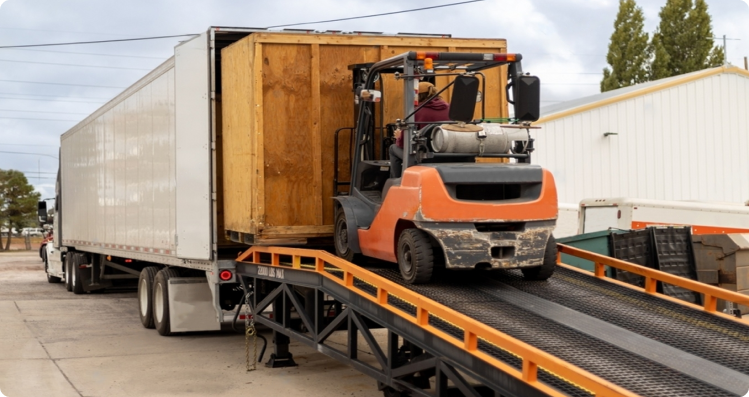
How Many Pallets Fit in a Dry Van Trailer?
When it comes to efficiently utilizing space in a dry van trailer, understanding the factors that influence the number of pallets you can load is crucial. This section explores key considerations and provides a guide on calculating the cubic feet of your shipment. Additionally, we'll share valuable tips on optimizing pallet loading for maximum efficiency.
Factors Influencing Pallet Capacity
The number of shipping pallets that can be loaded into a dry van trailer varies based on:
Trailer Dimensions:
The physical dimensions of the trailer play a significant role. Standard dry van trailers typically have dimensions of 53 feet in length, 8.5 feet in width, and 9.5 feet in height. These dimensions set the foundation for your pallet configuration.
Pallet Size and Type:
Pallets come in various sizes and types. Standard pallet dimensions are 48 inches by 40 inches, but variations exist. Consider the size and type of pallets you are working with, as this directly impacts how efficiently they can be arranged within the trailer.
Loading Configuration:
The way you arrange and stack your pallets matters. Efficient loading techniques, such as block stacking or interlocking, can significantly impact the number of pallets you can fit into the trailer.
Load Height and Weight:
The height and weight of the loaded pallets also impact how many can be safely and legally transported—both need to be taken into consideration for dry van freight shipping.
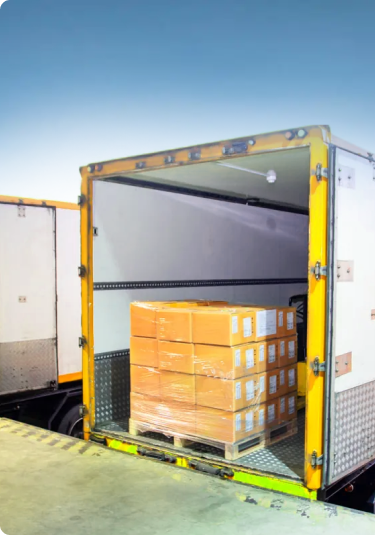
Calculating Cubic Feet
To estimate the number of shipping pallets you can fit in a dry van, you can calculate the cubic feet of your shipment by using the following formula:
Cubic Feet =
Length × Width × Height × Number of Pallets
Utilize this formula with the specific dimensions of your pallets and the number of pallets you plan to load. This calculation will provide valuable insights into the spatial requirements of your shipment.
For example, here are some examples of pallet capacities in a 53-foot trailer:
Load your pallets with confidence
Getting the most from your supply chain often comes down to whether you have all the tools needed to succeed. This pallet-loading guide is one such tool.
Keep it close by to reference in your journey toward becoming the supplier that always delivers.
how many pallets can you fit in a 53-foot long, 102-inch wide, dry trailer?
| pallet size (lxW) | straight | Turned | pinwheeled |
|---|---|---|---|
| 48X48 | 26 | 26 | 26 |
| 48X40 | 26 | 30 | 28 |
| 45X48 | 28 | 26 | 26 |
| 42X42 | 30 | 30 | 30 |
| 40X48 | 30 | 26 | 28 |
| 36X36 | 34 | 34 | 34 |
| 44X44 | 28 | 28 | 28 |
| 48X36 | 26 | 34 | 30 |
| 48X20 | 65 | 62 | – |

Optimizing Pallet Loading for Maximum Efficiency
Achieving maximum efficiency in pallet loading involves strategic planning and execution. Here are some tips to optimize your pallet loading process:
Uniform Pallet Sizes:
Whenever possible, use uniform pallet sizes to simplify the stacking process and maximize space utilization.
Utilize Vertical Space:
Stack pallets vertically, taking advantage of the trailer’s height. Use secure stacking techniques to prevent shifting during transit.
Consider Weight Distribution:
Distribute the weight evenly across the trailer to ensure stability during transportation. This not only enhances safety but also maximizes the trailer’s capacity.
Invest in Pallet Racking Systems:
For businesses with frequent shipping needs, investing in pallet racking systems can provide an organized and space-efficient solution.
Use Plated Trailers:
These trailers, named for their plate-smooth inside walls, grant you additional interior space for easier loading. They do without adding noticeable exterior width that would otherwise be cumbersome.

The Dry Van Freight
Shipping Process
From scheduling and loading to transit and delivery, the dry van freight shipping process for craft beverages is a meticulous journey. Every step is crucial to ensure that your beverages are transported safely, efficiently, and in perfect condition. Whether you’re a seasoned logistics manager or someone exploring the fundamentals of freight shipping, this section will provide valuable insights.
Key Steps Involved in Shipping Goods via Dry Van Trailers

Scheduling and Route Planning
This involves route optimization that factors in weather conditions, road infrastructure, and distance to ensure timely and safe delivery. Using advanced routing software helps avoid delays and optimize fuel efficiency.

Loading the Freight
Beverages are loaded and secured in a way that minimizes movement and potential damage. For craft beverages, this often means using customized pallets or crates that fit snugly into the dry van.

Transit
During transit, temperature and humidity control within the dry van can be crucial, especially for certain types of beverages. GPS tracking and temperature monitoring systems are often used to ensure the product’s integrity throughout the journey.

Unloading and Delivery
At the destination, special handling equipment like temperature-controlled forklifts may be used for temperature-sensitive beverages. Unloading is scheduled to minimize exposure to adverse conditions.

Post-Delivery
This involves thoroughly inspection the goods for any damage, reconciling inventory, and gathering feedback for continuous process improvement.

Ship Smarter, Choose Dry Van!
Click the button for a quick quote and experience reliable, on-time dry van shipping tailored to your business needs.
get a quotePackaging Your Craft Beverages
How you package your craft beverages plays a pivotal role in preserving their integrity and presenting them to your customers in their best condition. It’s crucial to have a thorough understanding of your product. Consider their specific characteristics, such as carbonation levels, sensitivity to light, and the impact of temperature fluctuations. This knowledge will guide you in selecting packaging materials and shipping methods that provide sufficient protection during transit.
Read More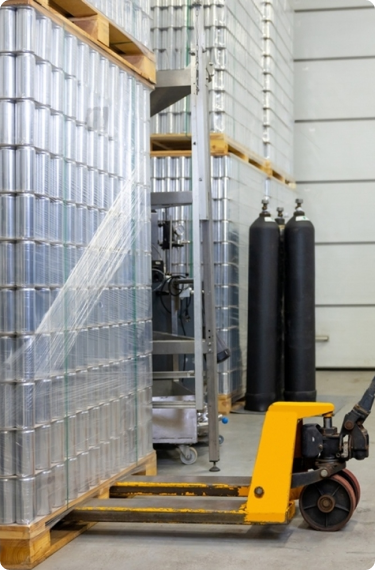
Here are the essential considerations to keep in mind:

Protection Against External Factors
The right packaging materials act as a barrier, safeguarding your products from light, temperature variations, and physical damage during transit. For example, cans and dark glass bottles are excellent choices for shielding beverages from harmful UV rays that can degrade flavor and quality.

Minimizing Breakage and Spillage
Shipping inherently involves handling, stacking, and potentially rough conditions during transportation. The packaging you choose must be strong enough to withstand these challenges and minimize the risk of breakage or leakage, including secure closures, cushioning, and using sturdy materials.

Optimizing for Transportation Efficiency
Efficient packaging goes beyond protecting against external elements; it also contributes to the overall efficiency of the shipping process. Consider the weight and dimensions of your packaging materials, as they impact shipping costs.

Compliance with Shipping Regulations
Different regions and countries have specific regulations regarding the transportation of beverages. Your packaging must comply with these regulations to prevent delays, fines, or even confiscation of your products. This includes proper labeling, adherence to packaging material guidelines, and compliance with shipping and customs documentation requirements.
 Learn More about Shipping Tips for Packaging Beer
Learn More about Shipping Tips for Packaging Beer 
Best Practices for Loading and Unloading Craft Beverages
Loading Best Practices

Stable Palletization
Arrange your craft beverage pallets with stability in mind. Use uniform pallet sizes, secure the load with stretch wrap or straps, and consider interlocking or block stacking to prevent shifting during transit.

Weight Distribution
Distribute the weight evenly across pallets and the entire shipping container. This ensures stability during transportation and minimizes the risk of damage to your craft beverages.

Temperature Control
If your craft beverages are sensitive to temperature changes, use insulated containers or temperature-controlled trailers. Maintain a consistent temperature throughout the loading process to preserve the quality of your products.

Loading Sequence
Plan the loading sequence strategically. Place heavier items at the bottom and lighter, more fragile items on top. This helps prevent crushing or damage to delicate packaging.

Labeling and Documentation
Clearly label each pallet with product information, batch numbers, and any special handling instructions. Ensure that all documentation, including shipping manifests and invoices, is readily available for accurate tracking.
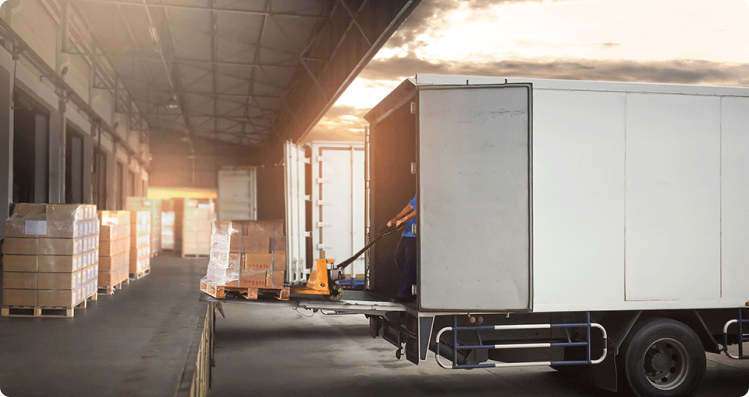
Unloading Best Practices

Safety First
Prioritize safety during the unloading process. Provide appropriate equipment, such as pallet jacks or forklifts, and ensure that personnel are trained in proper lifting techniques to prevent injuries.

Check for Damages
Conduct a thorough inspection of each pallet upon unloading. Look for any signs of damage, leaks, or compromised packaging. If damages are identified, document them immediately for insurance claims or replacements.

Adherence to Handling Instructions
Follow any specific handling instructions provided by the manufacturer or shipper. Some craft beverages may have special requirements, such as avoiding direct sunlight exposure or maintaining a certain orientation.

Organized Storage
If craft beverages will be stored for some time before distribution, organize them in a way that minimizes the risk of damage. Ensure proper storage conditions, including temperature and humidity control, to preserve product quality.

Inventory Management
Implement an effective inventory management system to track the arrival and placement of each product. This helps prevent stockouts or delays in fulfilling customer orders.
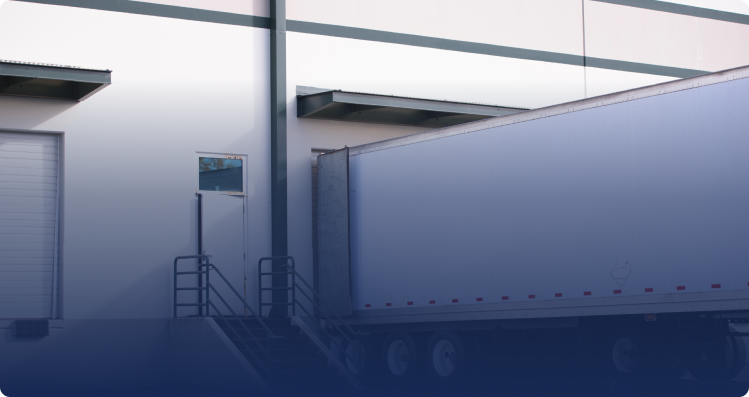
Your Shipment, Our Priority!
What are you waiting for? Learn more about our cost-effective dry van shipping solutions.
get a quote8 Factors that Influence Dry Van Shipping Rates
Dry van freight rates depend on more than just moving goods from one place to another. Several things can change the cost of shipping in a dry van, including:
Weight and Dimensions
Dry van rates are higher for larger and heavier shipments. This is due to the increased occupied space inside the trailer as well as the higher fuel costs required to move your cargo.
Freight Class
The National Motor Freight Classification (NMFC) system assigns a freight class to goods based on factors like density, handling, and liability. The classification influences the dry van freight rates, with higher classes often incurring higher costs.
Distance Traveled
Longer distances mean higher fuel consumption and more time on the road, leading to increased costs. Rates are generally proportional to the distance covered.
Pickup and Delivery Locations
Pick-up and deliveries in densely populated urban areas or remote locations typically incur higher costs due to challenges in navigation, traffic, and accessibility.
Accessorials
These are additional services provided by carriers such as lift gate service, inside delivery, or residential delivery. Each service adds to the overall cost.
Fuel Costs
Fuel prices are a significant component of shipping rates. Fluctuations in fuel costs directly impact dry van rates, making them
variable over time.
Seasonal Demand
During peak seasons, like holidays, demand surges can lead to increased dry van freight rates due to higher demand for shipping services.
Carrier Selection
Different carriers offer varying rates based on their services, network, and efficiency. Choosing the right carrier can significantly impact dry van rates.
How to Calculate Freight Density
Freight density is calculated by dividing the weight of the item (in pounds) by its volume in cubic feet. We included this calculation in our dry van shipping guide because it influences the freight class, which in turn affects dry van rates. A higher density generally results in a lower freight class and potentially lower costs.

Here’s how to find your shipment’s
freight density in four simple steps:
measuring
Start by measuring the length, width, and height of the shipment in inches. Ensure that these measurements encompass the entire shipment, including any protruding parts or irregularities.
Calculate the volume
Calculate the volume by multiplying the length, width, and height measurements together. This calculation gives you the volume of the shipment in cubic inches.
freight density
Since freight density is typically calculated in cubic feet, convert the volume from cubic inches to cubic feet. Do this by dividing the
volume in cubic inches by 1,728 (the number of cubic inches in a cubic foot).
calculate the freight density
Finally, calculate the freight density by dividing the weight of the shipment (in pounds) by its volume in cubic feet. This gives you the density in pounds per cubic foot (PCF).

Expert Dry Van Freight Shipping With Brew Movers
Navigating the world of dry van shipping for craft beverages requires careful consideration and a comprehensive understanding of the intricacies involved. At Brew Movers, we’ve strived to provide you with a comprehensive dry van shipping guide that covers everything from understanding the basics to optimizing the loading process and managing shipping rates.
If you’re ready to apply what you’ve learned here to your business, Brew Movers provides expert dry van freight shipping services tailored to the unique needs of the craft beverage industry. Our all-encompassing logistics services can be used to ship:


